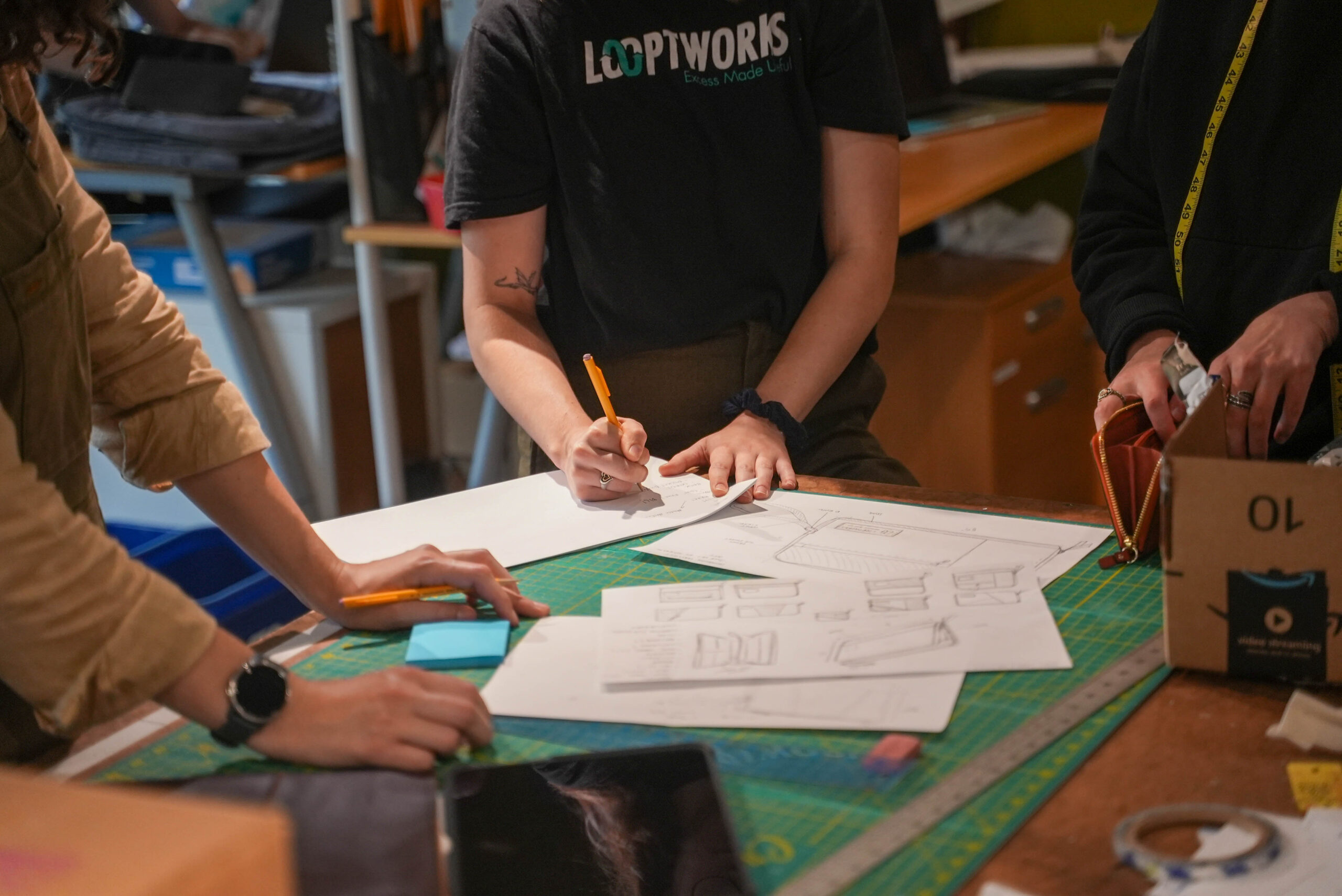
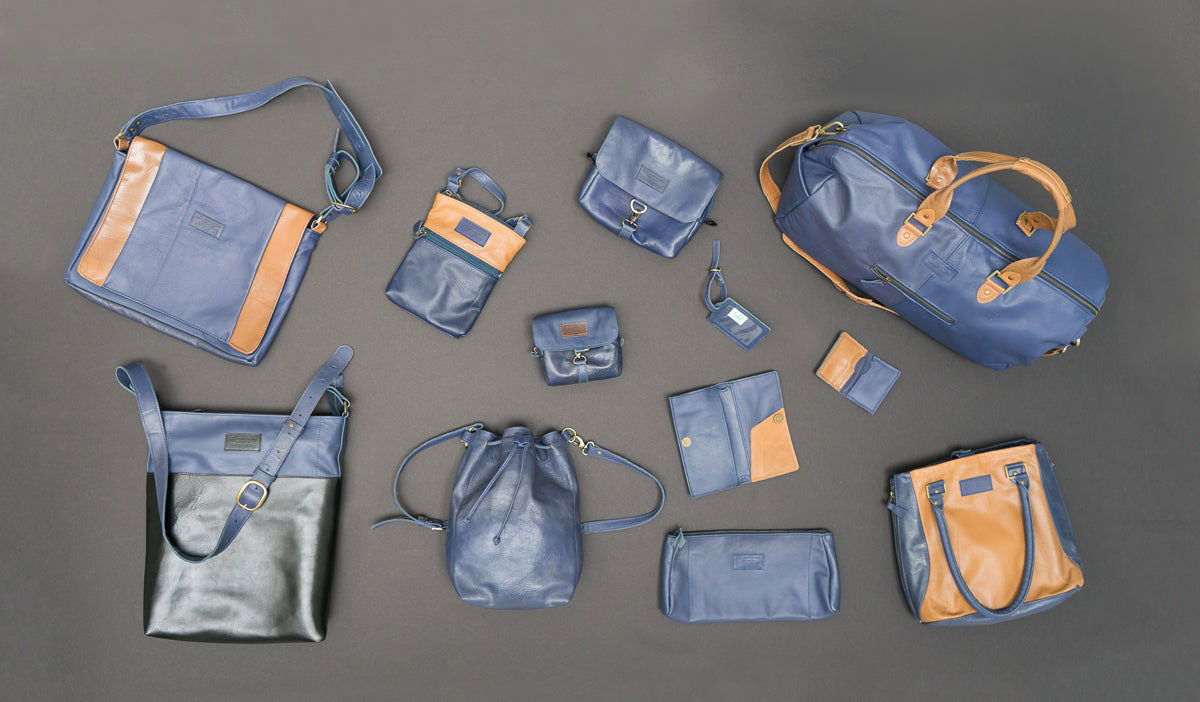
In an effort to conserve fuel, Southwest Airlines aimed to replace their heavy leather airline seats with a lighter weight material, demonstrating their commitment to textile circularity. They sought not only to reduce weight but also to extend the lifecycle of the beautiful blue and tan leather. To achieve this, we designed a bag collection for them, comprising the In Flight Weekender Duffle Bag, Convertible Tote Bag, Messenger Bag, and Toiletry Case, drawing inspiration directly from the original seat design.
A Jigsaw Puzzle That Transforms into a Bag Little did we know that transforming airline seats into bags would pose both a challenging and enjoyable design endeavor, deeply rooted in textile circularity principles. Our primary objective was to utilize as much of the leather as possible, thereby minimizing waste. This required us to intricately design the pattern pieces to interlock and maximize the use of the seating area, akin to assembling a jigsaw puzzle. It was undoubtedly a demanding task that yielded innovative and sustainable solutions.
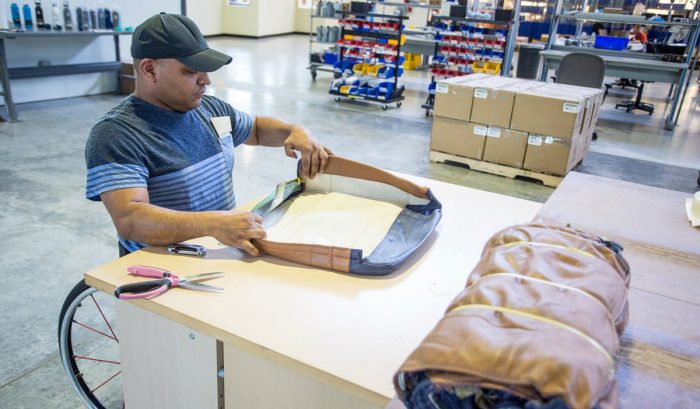
After the leather seat covers were removed and cleaned, they were dismantled into three pieces: the headrest, the seat back, and the seat bottom. The seat back is split into two pieces: the front side, where the person sits, and the backside, which has a pocket for safety instruction, magazines, and such. With a few exceptions, two airline seats make one of each bag in the collection.
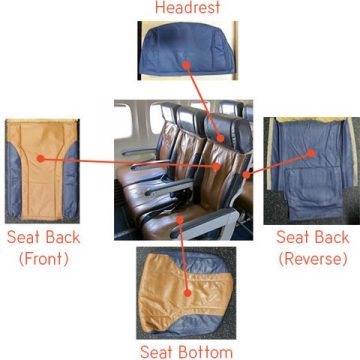
You wouldn’t believe the level of care, thought and creativity that went into making each of these bags. For instance, we only wanted to use leather that was of the highest quality. That meant our small team, including our CEO, had to wade through 40 acres of leather by hand to separate the great from the not-so-great.
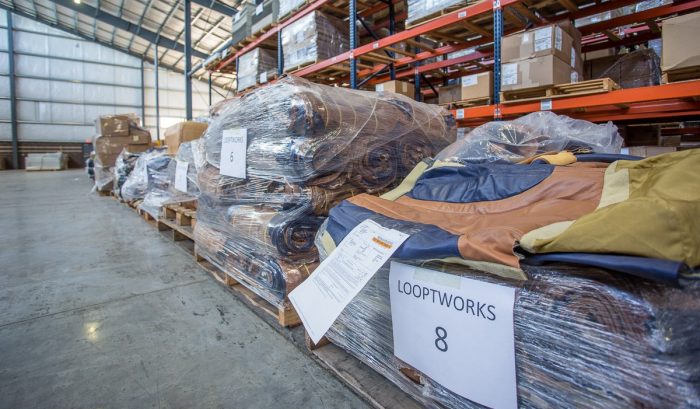
The duffle bag used every part of the seat in some way. The main body was made from the front side of the seat back, the side pockets from the seat bottom, the handles from the reverse side of the seat back, and the blue accent pieces from the headrest. Two seat backs were used to make the body of one weekender duffle.
Once in a while, we would get a seat cover that was narrower than the rest. That’s because it was one of the flight attendants’ seats. (Poor flight attendants!) We couldn’t use the same pattern piece to make a duffle with the narrower seat cover because the pattern was wider than the seat. Eventually, we found some tricky ways of repurposing the narrow seats to make backpacks and totes so that even those wouldn’t go to waste.
The two side pockets on either end of the duffle were made from the wider tan portion of the seat bottom. The remainder of the seat bottom was used to make the front side of a tote or backpack.
The headrest found its way into quite a few of the color accents on all LUV Seat products. On the duffle, the headrest was used to make the zipper tabs, blue side panels, handle anchors, and blue Looptworks tag. The handles were wrapped in leather from the reverse side of the seat back.
Calling All Businesses with Excess Textiles If your business deals with excess textiles, our solutions team is eager to collaborate! Together, let’s weave a greener tapestry for generations to come.


We’d love to hear from you!
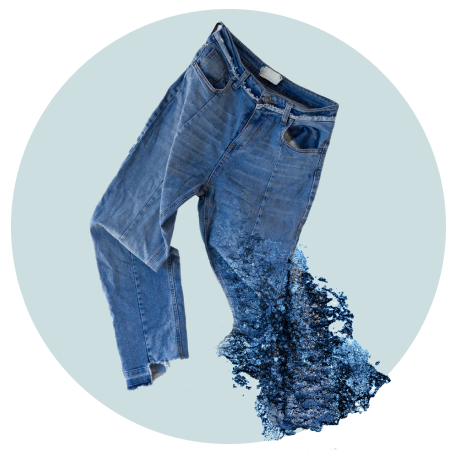

Tami is a senior accounting leader with over 16 years of experience in the manufacturing and textile industry. Her specialties include process development and implementation, mergers and acquisitions, job and project costing and analysis, and managing complex teams and technical projects. Tami has served as Chief Financial Officer and Controller for a variety of innovative companies, where her analytical skills and strategic mindset helped organizations create efficiencies in their financial systems.
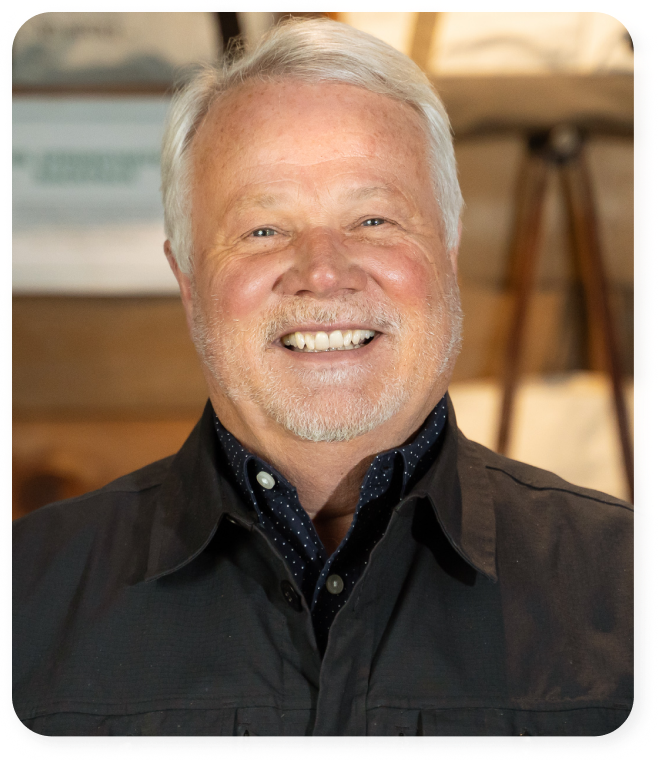
Kelley is a passionate and strategically minded business development leader with more than two decades of experience in the sporting goods apparel industry. He has experience in product construction, league partnerships, retail relationships, supply chain management, sustainability, circularity, and carbon footprint management. Kelley builds successful partnerships by putting the customer first while simultaneously advancing his organization’s business objectives.
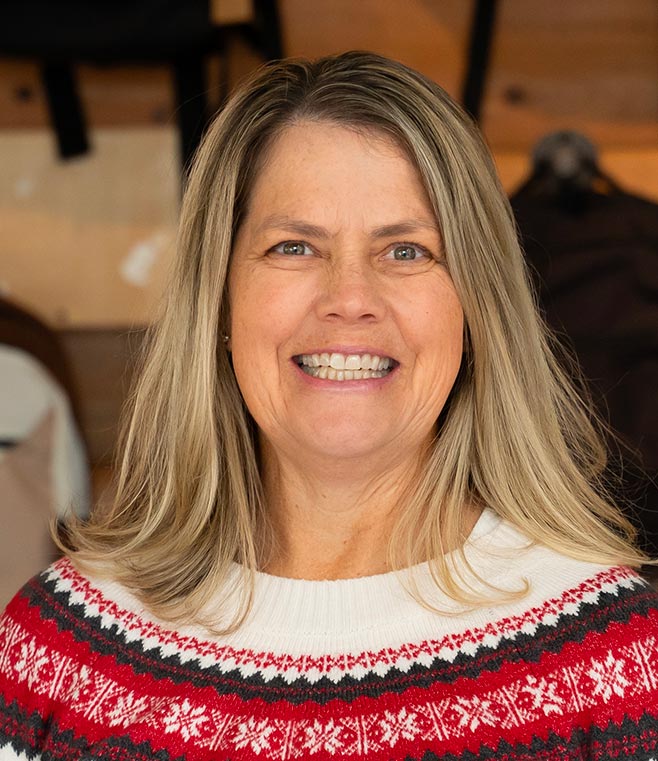
Suzy is a product leader and operations expert with more than 25 years of experience in the textile industry. She is passionate about finding creative solutions to complex problems and motivating people to action through vision, strategy, collaboration, and communication. Suzy has proven expertise in product development, sustainability, marketing, supply chains, and innovating processes and best practices to drive results.
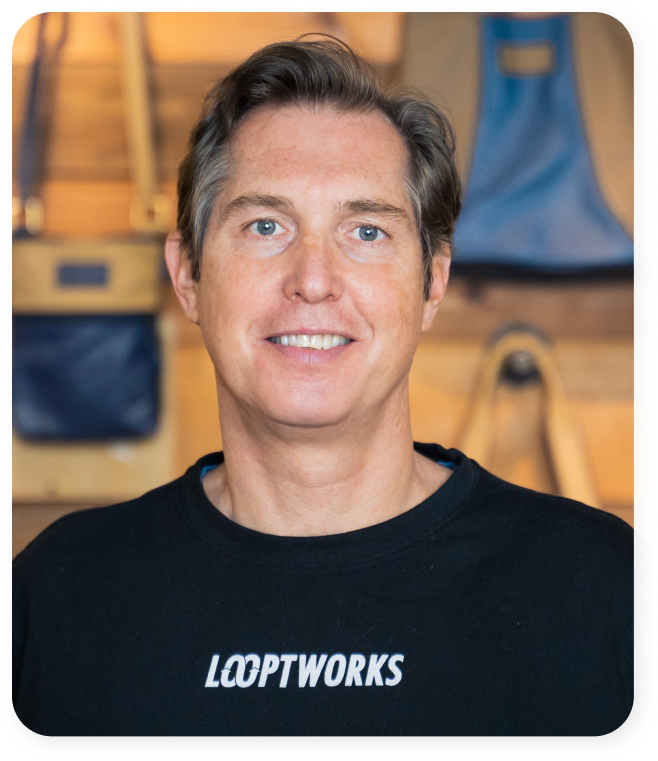
Scott is a visionary leader with more than 32 years of experience in strategic branding, innovative product creation, supply chain sustainability, and sales and marketing for global organizations. He founded Looptworks in 2009 as an industry solution for turning excess materials into upcycled consumer products. In 2022, Scott transitioned the company to a B2B business model focused on eliminating global textile waste through closed-loop solutions.

Scott is a visionary leader with more than 32 years of experience in strategic branding, innovative product creation, supply chain sustainability, and sales and marketing for global organizations. He founded Looptworks in 2009 as an industry solution for turning excess materials into upcycled consumer products. In 2022, Scott transitioned the company to a B2B business model focused on eliminating global textile waste through closed-loop solutions.